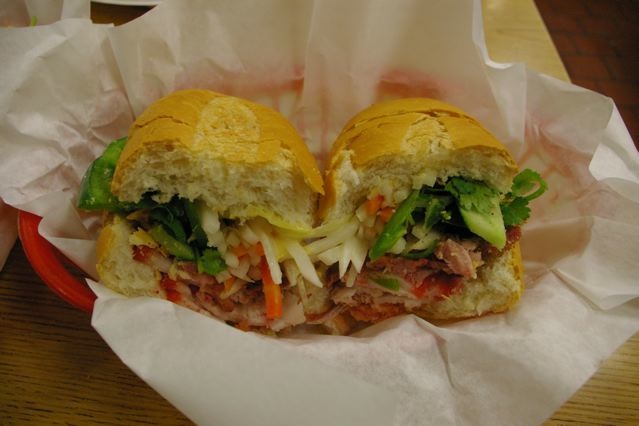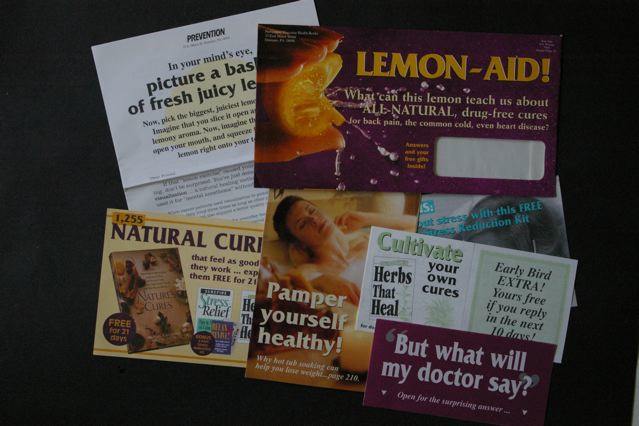
I’m finishing up a project that had me writing web product copy for over 150 different cuts and preparations of beef, pork and lamb. I need to describe each one in a way that makes the reader understands how it’s unique. A lot of this has to do with taste. Or does it?
So much great food writing is about the experience surrounding the eating—the origin of the ingredients, the way they’re prepared, the environment in which they’re consumed. Tasting itself is when all these elements come together—it’s the payoff for being in this place, at this time, eating this food. And if it’s good, that first bite and the flavor released becomes a time capsule or shorthand for remembering the entire experience.
Prepared dishes are easier to describe because the flavors play off against each other. The other day for lunch, for example, I had the Pork Bacon Sandwich at Cam Huong in Oakland’s Chinatown. The crunchy baguette lends crispness while showering my lap with crumbs. Mayonnaise adds sweetness and lubrication. Cucumber sliced and pickled daikon and carrot shreds provide coolness, crunch and slight acidity. Jalapeno means more crunchiness plus the anticipation of a delayed reaction mouth tingle from the aromatic chili oils. And all this is a backdrop for two meats. The “bacon” is one of those Asian special-pork concoctions that has very little taste but the slippery mouth feel that we love from fat. And the other pork, shredded, is cooked with salt and red spices and ends up with a gamy intensity which we recognize as the essence of meat. The day laborer who’s grabbed the seat opposite me asks how is it, and I say “great”.
By comparison, how does a New York steak taste? I find myself writing about musculature and where the beef comes from on the animal in part to make the reader an expert so they’ll feel comfortable presenting this expensive meat to their guests. And when it’s time to deliver an institutional message it comes through sounding like this:
“Eating dry-aged beef is as sensual and satisfying as drinking well-aged wine. The flavors have deepened and mellowed. The taste is concentrated, an effect brought about by moisture loss and by changes in the meat itself. Natural enzymes in the meat break down the fibers, enhancing the taste with a delicious nutty flavor and tender texture.”
So, science and nature come together to make magic which translates to user satisfaction. Appealing? I hope so. One of the greatest challenges, I found, is that there are actually only two words that describe this experience—“taste” and “flavor”. Can you tell me some others? Another word, “tenderness” which is universally used as a compliment for really good steak, is more closely related to the amount of fat than anything else. While “texture” is a promise, that when you bite into this stuff it WILL be tender, or perhaps crunchy, or maybe it will coat your tongue with the eggy creaminess of a rich sabayon.
Food writing may be hard, but it is easy and fun to read because it is so experiential and suffused with the joy of life. My personal favorite example, and in fact a book that was mentioned by many of the chefs I interviewed, is Heat by Bill Buford (that’s an Amazon.com ordering link). Buford, whose day job is an editor for The New Yorker, decides to see what life is like as a line cook at a Mario Batali restaurant. Before we know it, he’s made a lifelong commitment to a summer job carving meat in a Tuscan village. Go get it, and read it. But be sure you go hungry.
Contact lens wearers are a savvy lot. They know that once they’ve found the lens for the right eye, the other lens will inevitably fit the left eye. Thus there’s no reason to label the two sides of the contact lens case “L” and “R” as in the top example. You could call the second lid “not R”, or you could leave it blank… or you could use it for MARKETING, like the smart folks at Alcon in the lower example.

